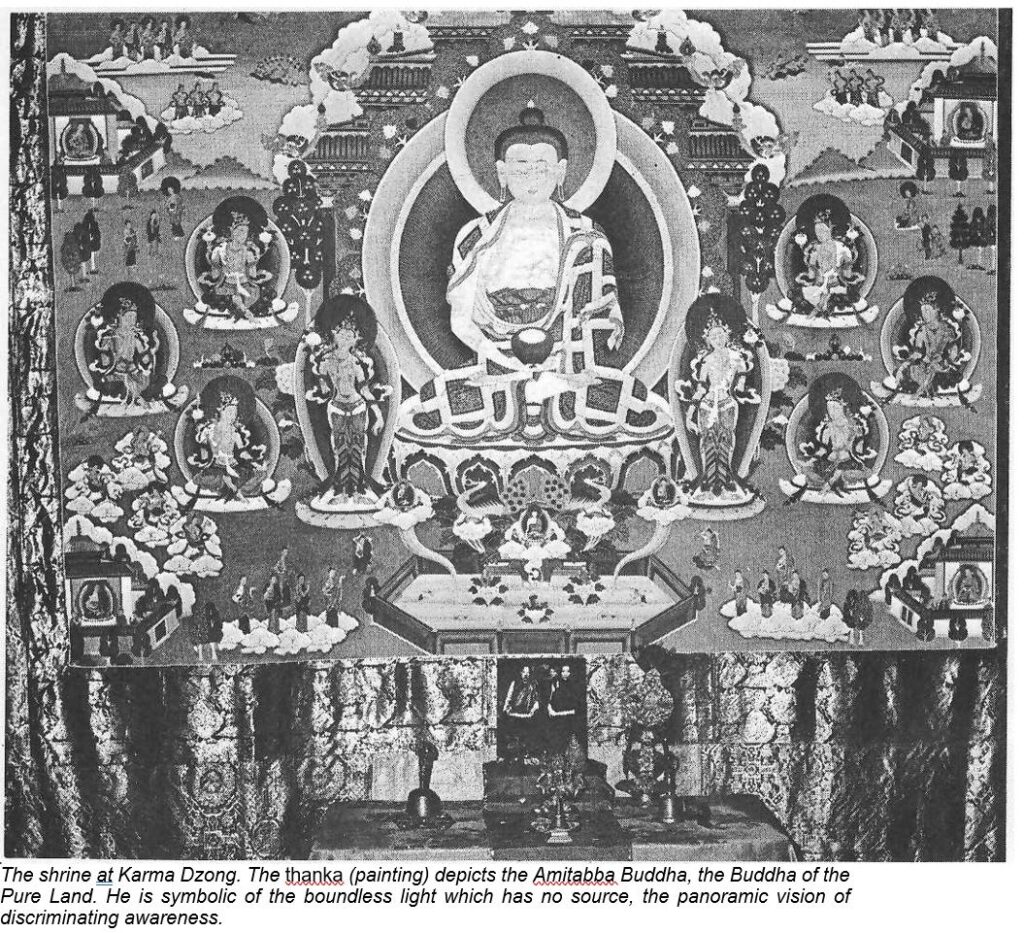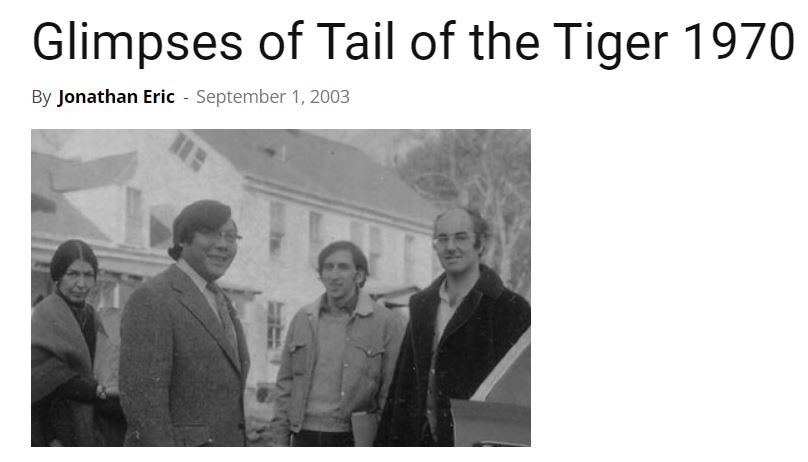TRANSCENDING MATERIALISM
Originally published in the first issue of ‘Garuda” journal devoted to presenting the teachings of Tibetan Buddhism and the work of Chogyam Trungpa, 1971


Night without sun,
Dark without a moon,
Cloudy without stars,
Then the sudden flash of lightning illuminates
As once in a hundred times, Buddha activity sparks
knowledge to the merit of the world.
This quotation from Shanti Deva’s works (Shantideva was a great Buddhist master from the monastic university of Nalanda in India) is always applicable to what happens in the world generally, as it is now to the atmosphere of the United States at the height of materialism. When we speak of materialism, it is as a psychological term describing the reign of the three lords of materialism: the lord of form, the lord of speech, and the lord of mind.
The lord of form refers to the seductive quality of the apparent psychological comfort which comes from the impersonal, predictable efficiency of mass production. It is the attitude expressed in the attempt to remove all irritation from our physical surroundings, trying to reach a total comfort by controlling situations absolutely. It is an anti-nature attitude of refusing to see the evolutionary aspect of everything. By a scientific, mechanical approach to things one manipulates them to shield oneself from irritation, from the raw and rugged quality of life.
The lord of speech refers to the extension of the technological aspect of materialism into the realm of philosophy. Thus one sees trust in and reliance upon sophisticated conceptualized systems, such as the selling approaches of Madison Avenue or the complicated ideologies of many nation-states. Temporary and illusory success in manipulating the world toward the fulfillment of these intellectual systems confirms our trust in them until we begin to see the world almost completely through the filter of ideology or dogma.
The lord of mind refers to the extension of the materialism of form and speech into the realm of spiritual matters, and it is once again characterized by the attempt to establish control for the benefit of ego. One can even convince oneself that one is stepping out of ego. One has developed a logical style of rationalizing situations, so much so that this famflTar method is applied to the spiritual realm as well. Thus theology is born and one uses yogic practices in the service of ego. (“I want to be ‘high’ or ‘spiritual.’ “). But the logic of materialism cannot be applied to the realm of spirit.
The process America is going through is not exclusive. It is happening here first, but the rest of the world will go through the cycle, for as we can see, the materialism of form is already rampant.

As Shanti Deva describes, this surfeit of materialism provokes the underlying Buddha-nature or instinctive intelligence, particularly where the concentration of materialism has the highest energy. And so we see here in America a search for something beyond diagrams or mathematical calculations, a surge towards Eastern religions, tribal structures, dropouts from the system, from school and jobs — even involvement with drugs is a movement in this direction. Many of these alternatives are by no means perfect.
It is not coincidental that the Chinese Communists invaded Tibet and forced the exodus of great teachers at the very time that people in the West had experienced a surfeit of materialism and had begun searching for a spiritual life. One is reminded of the time of Buddha, which was also a time of materialism and social disorganization. The Buddha dropped out of his aristocratic life situation and became an ascetic renunciate in search of answers to basic life questions. For seven years he followed the practices of the Indian Hindu ascetic tradition until, finally, seeing its futility, he renounced it. At this point he began to discover a third way, independently working on his mental processes. Similarly, American youth have found that the continual attempt to solve the problems of life — always trying to remove unpleasant situations and replace them with sophisticated solutions — only further complicates the patterns of our striving. These methods of escaping somehow provoke the same thing again, because we try to put down wall after wall, aggression after aggression, and it is seen very much in terms of a battle. So one seems mainly to exchange one dogma for another.
Then, having built in such an extreme way, questions begin to arise in one’s mind, breaking the pattern of speeding and striving. And they are kind of pregnant questions, in that they contain the answers as well. This is the instinct coming out, the instinct of one mind or egolessness rather than the duality of mind and its projections. The simplicity is most apparent by contrast. Once you begin to see this contrast, you begin to step out of the force of psychological materialism. It is seen as competition and ambition, always striving to secure the future, in contrast to the simplicity of nowness, which is down to earth and direct.
The nowness is not just purely the meditative state, but it is seeing things as they are. You have to stop running in order to ask questions, and this cuts the chain reaction of karmic energy and another kind of motion sets into the wheel of karma from then on.
So therefore, nowness is not a way of seeing the truth nowness is being true, which helps to unmask the pretense of ego. You begin to examine suffering and pain as it is, the same psychological process as Buddha’s discovery of the Four Noble Truths.
In my experience of working with people in this country, it has not been a process of proselytizing or conversion, but rather people convert themselves through the questioning and arousal of this basic instinct. The great demand creates an interesting and energetic situation where people come to study meditation and bring a new point of view to their lives, or the energy goes in the direction of creating communities on the framework of the dharma (rather than monastic centers) such as Tail of the Tiger in Vermont and Karma Dzong in Colorado.
These situations seem to develop as groups of yogis living together and, in a sense, both positive and negative experiences are used as part of the path. This pattern encourages independence without dogma.
Many people have already begun their spiritual journey before coming in contact with the teachings, and the learning process is evolutionary rather than purely academic. That is to say, they are working on their already existing psychological states. They start with the Hinayana practice of Samatha and Vipassana meditation, and the gradual growth up to yogic teachings seems to be a natural one, rather than straining under the promise of exotic and sudden enlightenment. With the inspiration of a spiritual friend, a certain commitment or discipline develops which acts as skillful means in the process of working with themselves. As their development takes place, the richness of the Buddhist teaching of Tibet is not too potent, because it doesn’t present a seductive goal, but rather reaffirms the students’ personal experiences, both intuitive and intellectual. Needless to say, the growing comprehension of the play of this whole situation is in itself Buddha activity.
Read more:
